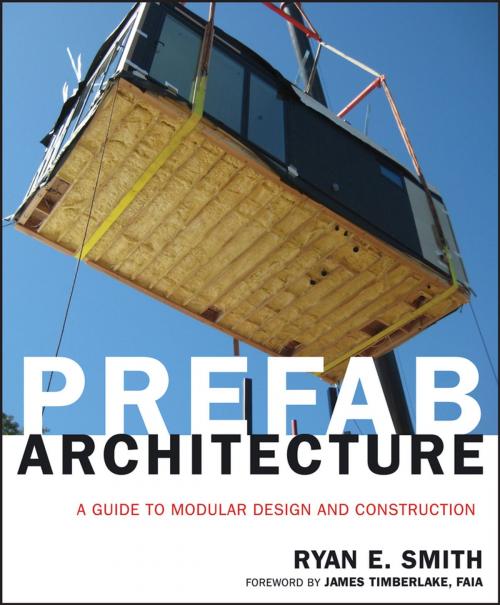Prefab Architecture
A Guide to Modular Design and Construction
Nonfiction, Art & Architecture, Architecture, Public, Commercial, or Industrial Buildings| Author: | Ryan E. Smith | ISBN: | 9780470880463 |
| Publisher: | Wiley | Publication: | June 3, 2011 |
| Imprint: | Wiley | Language: | English |
| Author: | Ryan E. Smith |
| ISBN: | 9780470880463 |
| Publisher: | Wiley |
| Publication: | June 3, 2011 |
| Imprint: | Wiley |
| Language: | English |
"Prefab Architecture . . . is beyond theory, and beyond most of what we think we know about pods, containers, mods, and joints. This book is more than 'Prefabrication 101.' It is the Joy of Cooking writ large for the architecture and construction industries."
—From the Foreword by James Timberlake, FAIA
THE DEFINITIVE REFERENCE ON PREFAB ARCHITECTURE FOR ARCHITECTS AND CONSTRUCTION PROFESSIONALS
Written for architects and related design and construction professionals, Prefab Architecture is a guide to off-site construction, presenting the opportunities and challenges associated with designing and building with components, panels, and modules. It presents the drawbacks of building in situ (on-site) and demonstrates why prefabrication is the smarter choice for better integration of products and processes, more efficient delivery, and realizing more value in project life cycles. In addition, Prefab Architecture provides:
- A selected history of prefabrication from the Industrial Revolution to current computer numerical control, and a theory of production from integrated processes to lean manufacturing
- Coverage on the tradeoffs of off-site fabrication including scope, schedule, and cost with the associated principles of labor, risk, and quality
- Up-to-date products featuring examples of prefabricated structure, enclosure, service, and nterior building systems
- Documentation on the constraints and execution of manufacturing, factory production, transportation, and assembly
- Dozens of recent examples of prefab projects by contemporary architects and fabricators including KieranTimberlake, SHoP Architects, Office dA, Michelle Kaufmann, and many others
In Prefab Architecture, the fresh approaches toward creating buildings that accurately convey ature and expanded green building methodologies make this book an important voice for adopting change in a construction industry entrenched in traditions of the past.
"Prefab Architecture . . . is beyond theory, and beyond most of what we think we know about pods, containers, mods, and joints. This book is more than 'Prefabrication 101.' It is the Joy of Cooking writ large for the architecture and construction industries."
—From the Foreword by James Timberlake, FAIA
THE DEFINITIVE REFERENCE ON PREFAB ARCHITECTURE FOR ARCHITECTS AND CONSTRUCTION PROFESSIONALS
Written for architects and related design and construction professionals, Prefab Architecture is a guide to off-site construction, presenting the opportunities and challenges associated with designing and building with components, panels, and modules. It presents the drawbacks of building in situ (on-site) and demonstrates why prefabrication is the smarter choice for better integration of products and processes, more efficient delivery, and realizing more value in project life cycles. In addition, Prefab Architecture provides:
- A selected history of prefabrication from the Industrial Revolution to current computer numerical control, and a theory of production from integrated processes to lean manufacturing
- Coverage on the tradeoffs of off-site fabrication including scope, schedule, and cost with the associated principles of labor, risk, and quality
- Up-to-date products featuring examples of prefabricated structure, enclosure, service, and nterior building systems
- Documentation on the constraints and execution of manufacturing, factory production, transportation, and assembly
- Dozens of recent examples of prefab projects by contemporary architects and fabricators including KieranTimberlake, SHoP Architects, Office dA, Michelle Kaufmann, and many others
In Prefab Architecture, the fresh approaches toward creating buildings that accurately convey ature and expanded green building methodologies make this book an important voice for adopting change in a construction industry entrenched in traditions of the past.















